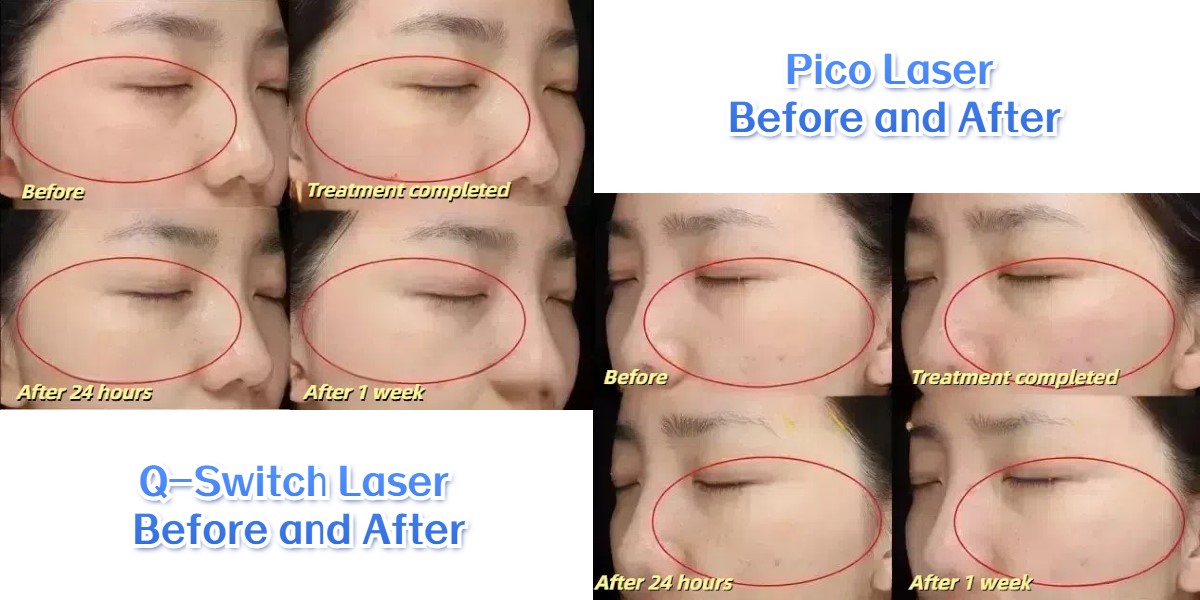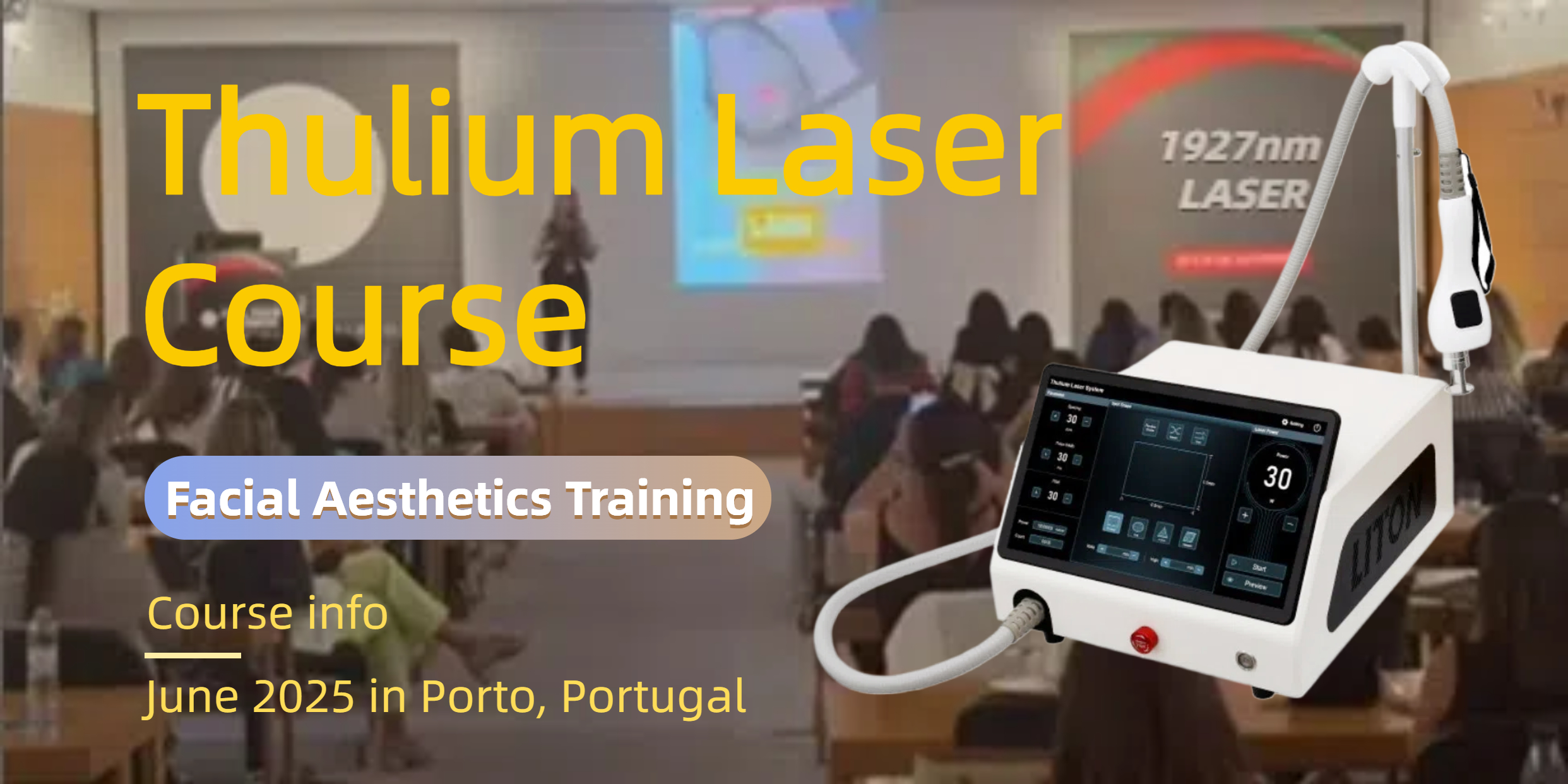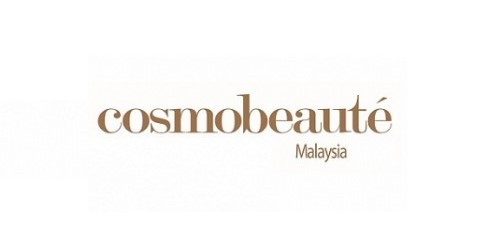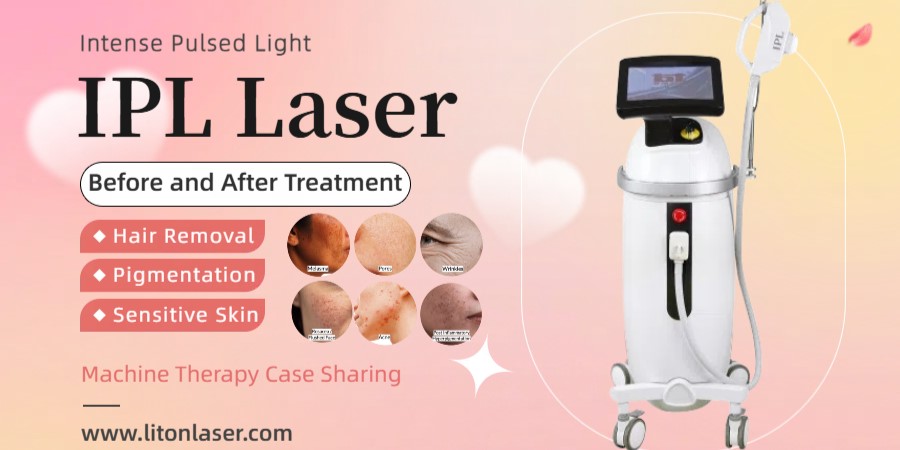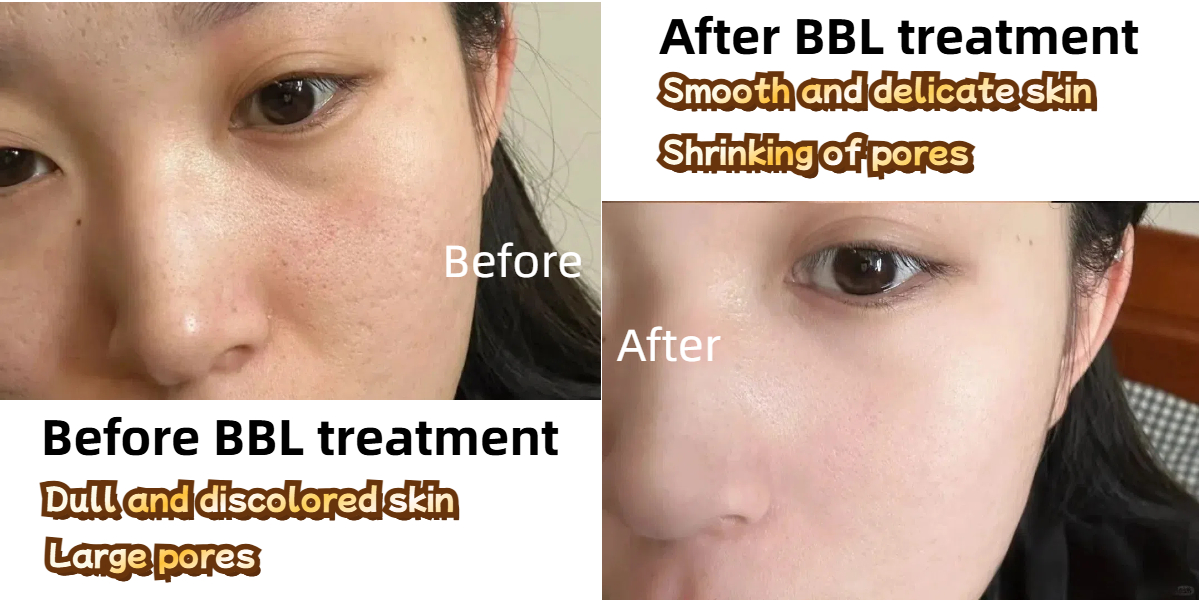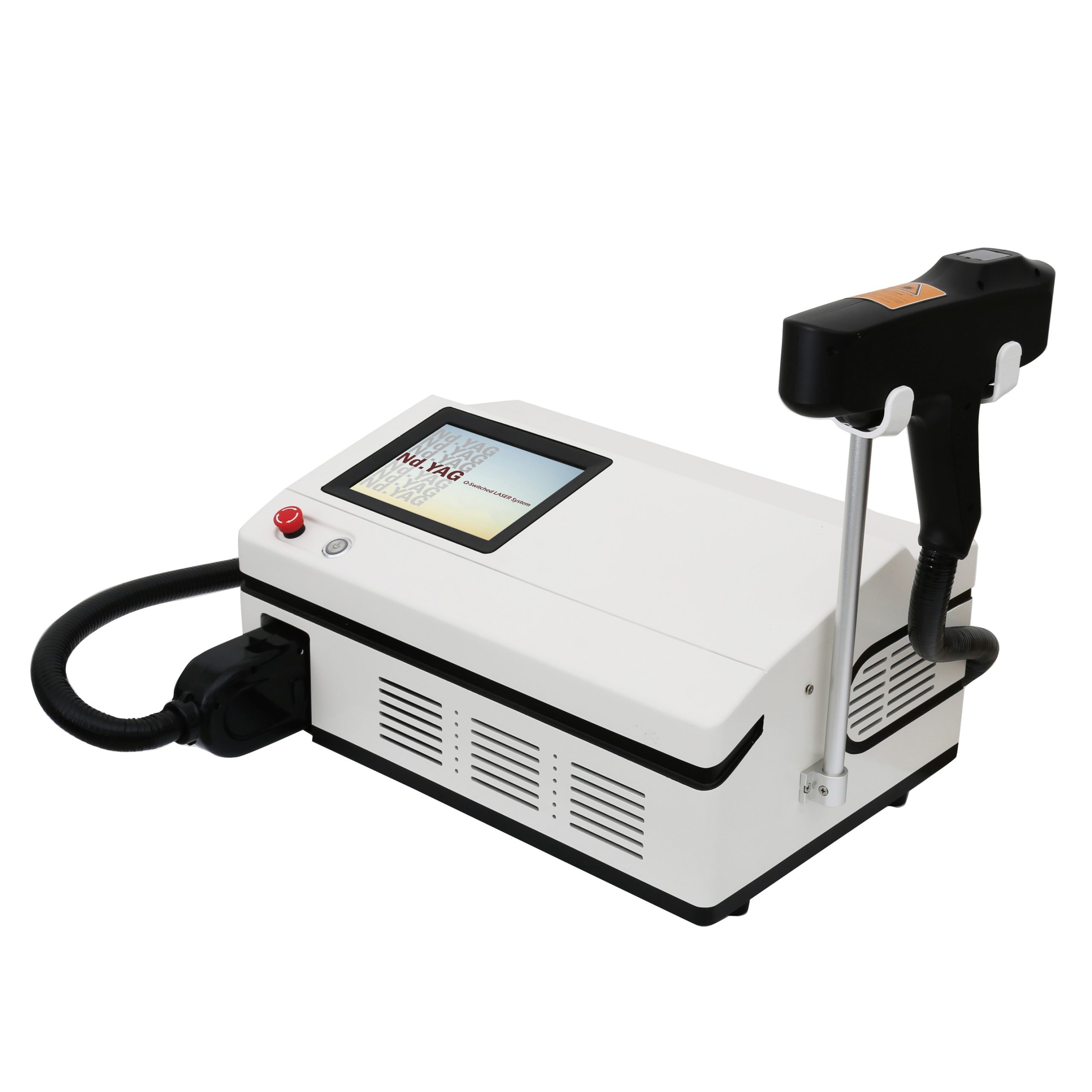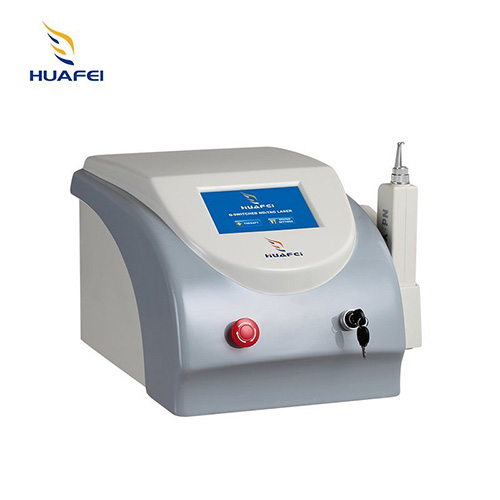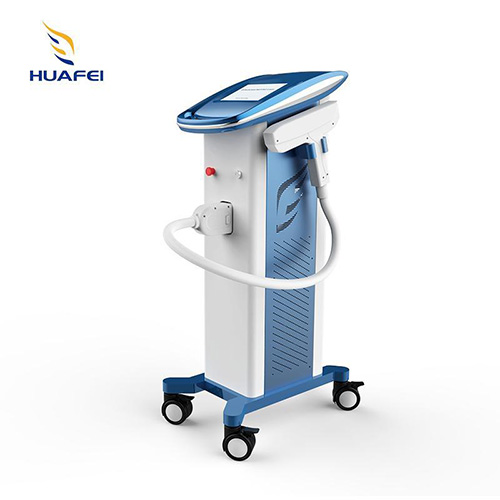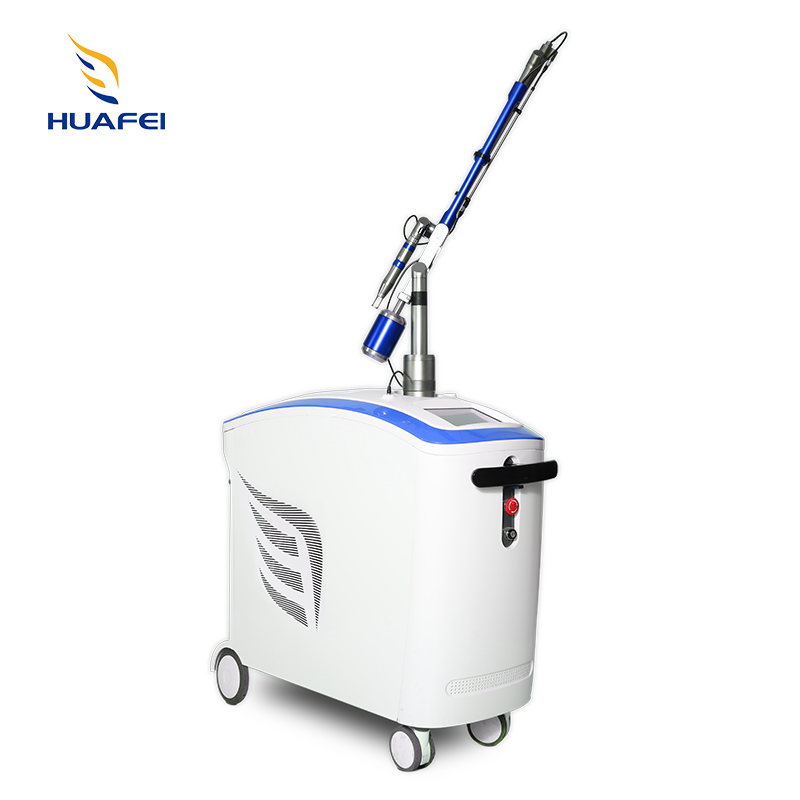Café au lait spots are a common hyperpigmentation disease. They are very common in clinical practice and can occur at birth or after birth. Many patients are deeply troubled by the impact of café au lait spots on their appearance.
Clinical café au lait spots are mainly treated with Q-switched lasers. Since the melanocytes of café au lait spots are distributed in the epidermis, epidermal melanocytes can be destroyed by using shorter wavelengths and smaller energy densities. For example, Q-switched 532nm Nd∶YAG lasers, 755nm alexandrite lasers, 510nm pulsed dye lasers, Q-switched ruby lasers (694nm) and CO₂ lasers are all good choices.
Some clinical scholars have found that the use of Q-switched 1064 nm Nd:YAG laser laser to treat café au lait spots is very effective, and the possibility of pigmentation and depigmentation is low.
However, during the treatment process, the control of parameters such as energy density, spot size and endpoint reaction will affect the final efficacy. During treatment, it should be noted that the energy density should not be too large. A spot test can be performed first until the surface of the lesion turns white.
So, how to choose the treatment spot size? Some clinicians choose a smaller spot, while others choose a larger spot. Which one is more appropriate? How to look at the endpoint response? Let’s learn about it together.
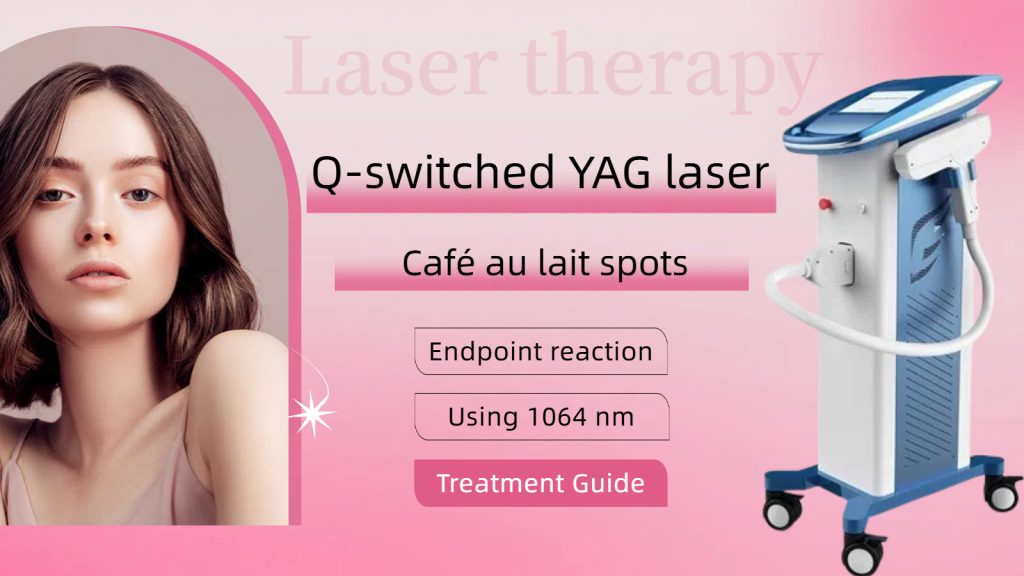
1. What are cafe au lait spots?
It is a common pigmentary abnormality that usually appears before the age of 20. About 13.8% of the total population suffers from cafe au lait spots.
Cafe au lait spots appear and form at birth or in childhood, and increase in proportion with the growth and development of the body. Their morphology generally does not change. The clinical manifestations are light brown patches, similar in color to coffee with milk, ranging from light brown to dark brown, but each patch is the same color and very uniform, and the depth is not affected by sunlight. Cafe au lait spots range in size from a few millimeters to tens of centimeters, and are round, oval or irregular in shape, with clear boundaries and completely normal surface skin texture.
Cafe au lait spots can appear anywhere on the body, but the most common sites are the trunk and limbs. With age, some lesions will gradually deepen in color and will not disappear on their own.
Coffee spots are mainly caused by abnormally active melanocytes in the basal layer of the skin and abnormal increase in melanin. The formation of coffee spots is related to the following factors:
- Environmental pollution: pollutants enter the human body through breathing, eating, etc., interfering with the normal development of the fetal skin.
- High stress during pregnancy: If pregnant women are under great pressure, it may cause coffee spots.
- Hormone level: The onset of coffee spots is also related to the hormone level of pregnant women, traumatic stimulation, etc.
- Genetic factors: Coffee spots are hereditary and may be inherited.
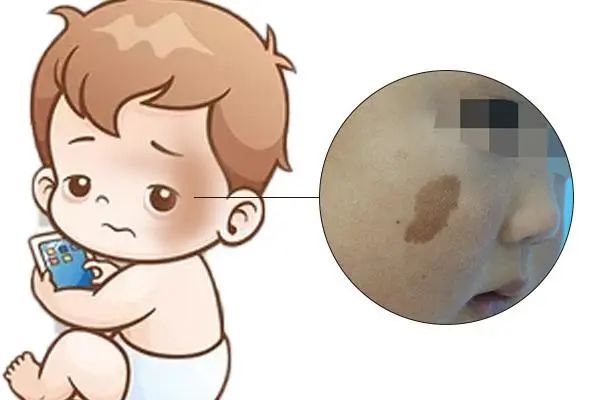
2. The principle of Q-switched Nd YAG laser treatment of cafe au lait spots.
Selective photothermal decomposition is the mechanism of laser treatment of cafe au lait spots. Currently, Q-switched pulsed laser is the most popular choice for the treatment of cafe au lait spots.
The mechanism of Q-switched Nd∶YAG laser treatment of skin pigment is the selective photothermal effect of laser, that is, the high-energy laser emitted instantly acts on the pigment particles through the skin. After absorbing the high-energy laser, the pigment particles rapidly expand and break into small particles. In the subsequent inflammatory reaction, most of the pigment particles are phagocytosed by macrophages, and then absorbed and discharged from the body; a small number of pigment particles migrate to the outside of the body with the epidermis, while the surrounding normal skin tissue is not damaged, thus achieving the purpose of treatment and having little effect on the surrounding normal cells.
Q-switched laser has a reasonable wavelength and can only penetrate the epidermis or dermis, and will not break blood vessels and nerves, etc., that is, Q-switched laser only acts on melanin and will not affect hemoglobin, blood vessels, and fat.
Therefore, there is no possibility of misoperation of Q-switched laser, and it causes less damage to normal skin. Even if it hits normal skin, it will not damage it.
3. When using laser to treat cafe au lait spots, should a large or small light spot be used?
Small light spots are usually used for treatment in clinic, but some clinicians do have better results with large spots. Some experts in clinical literature mentioned that large light spots can improve efficacy and reduce complications. The more concentrated the energy irradiated under the skin, the less scattering there will be, and the melanin stimulation to the redundant surrounding tissues will be less, which can also reduce the occurrence of pigmentation and adverse reactions. Therefore, if the energy of a single hit is not enough, and the stimulation and impact on melanin are smaller, it is necessary to treat it multiple times.
Under normal circumstances, Café au lait spots will have a good effect after 2 treatments, while the treatment with a large spot mode may require 10 or 20 superimposed treatments to achieve the effect of 2 small spot treatments.
However, some studies have found that large spots can significantly improve efficacy and reduce complications. Choosing large spots with high energy can not only remove melanocytes in the epidermis, but also remove melanocytes in hair follicles, reducing the recurrence rate.
This is a question of pros and cons. The most suitable parameters can be selected according to the clinical skin lesions and the condition of the patient’s skin.
Clinical research literature on large spots for the treatment of Café au lait spots. Some people use Q-switched 1064nmNd:YAG laser to treat Café au lait spots, and have achieved good results, with an effective rate of 76.1%. During the treatment, long pulses, large spots, and high frequencies are used to scan the lesions multiple times. This is significantly different from the common methods of laser treatment of Café au lait spots reported in existing domestic and foreign literature, namely, medium and short laser wavelengths (532nm, 755nm), small spots (3~4mm), low frequencies (1~2Hz), and scabs after treatment. The treatment effect is good but the adverse reactions are few.
In addition, Litonlaser and other studies have found that large spots can significantly improve the efficacy and reduce complications. The selection of large spots and high energy can not only remove melanocytes in the epidermis, but also remove melanocytes in the hair follicles, reducing the recurrence rate.
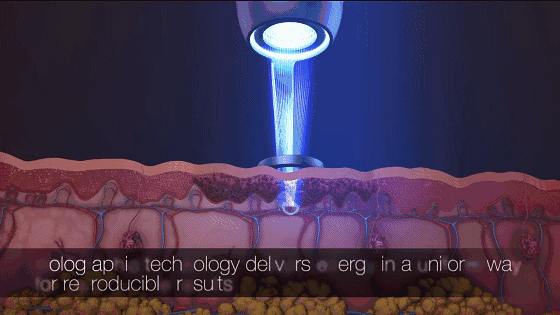
4. What is the endpoint reaction of laser treatment for café au lait spots?
The endpoint reaction of treatment is determined by many aspects. Before laser treatment of Café au lait spots, the characteristics of the patient’s skin lesions should be comprehensively considered, and the energy, energy density, frequency and spot should be adjusted to effectively control the endpoint reaction to achieve the best effect.
The endpoint reaction of treating Café au lait spots is determined by the skin color of the patient, the color of the lesions, and the selected energy and wavelength.
For example, if the 532nm or 694nm Q-switched laser is used clinically, the immediate reaction is a frosty white reaction, or a slightly yellow frosty white reaction; the endpoint of Q-switched 755nm treatment is grayish white for the lesions; and picosecond laser treatment must not immediately produce a frosty white reaction, but a slightly frosty white or slightly frosty white reaction.
For comparison, the darker the skin lesions, the lower the energy. If the energy is not lowered at this moment, the skin lesions will definitely react particularly white, and the energy may be relatively high at this time.
Some clinical researchers use Q-switched 532nm treatment heads and Q-switched 1064nm treatment heads for alternating treatment.
That is, the first treatment uses a Q-switch 532nm treatment head, and the treatment parameters are: frequency 10Hz, energy 3J/cm² to 10J/cm², pulse time 100ns, and spot diameter 2mm.
The handle is perpendicular to the skin, and the degree of irradiation is when the skin lesions turn grayish white and purpura appears under the skin.
The second treatment after an interval of 2 months uses a Q-switch 1064nm treatment head, and the treatment parameters are: frequency 10Hz, energy 3J/cm² to 10J/cm², pulse time 100ns, and spot diameter 2mm.
The probe is perpendicular to the skin, and it is appropriate to have spot bleeding on the skin a few seconds after irradiation. The treatment parameters are adjusted at any time according to the changes in the skin at each visit, and the results show that the effective rate is 80%.
5. Why is 1064 nm laser more effective in treating café au lait spots?
At present, Q-switched 532nmNd∶YAG laser and 755nm alexandrite laser are commonly used for treatment in clinic. During treatment, the laser blade is vertically aligned with the skin lesion for scanning. After irradiation, the skin lesion turns white instantly. After surgery, redness, swelling, pain and scabs may occur. Adverse reactions such as bleeding, small blisters and blood blisters may occur. Pigmentation is easy to appear after the scab falls off. Some lesions are cured after 1~2 times, but quite a few lesions are not effective.
Some clinical scholars use Q-switched 1064nm Nd∶YAG laser to treat Café au lait spots with irregular shapes and light brown to dark brown lesions. The pulse width is 5~20ns, the spot diameter is 6mm, the pulse frequency is 10Hz, and the energy density is 2.4~3.3J/cm². The laser handle is vertically irradiated on the surface of the skin in front of the patient’s ear, and the skin is quickly scanned 1~2 times, with the degree of skin flushing. Treatment is once every 7~10 days, and a total of 6~15 times. A good therapeutic effect was achieved, with an effective rate of 76.1%. During the treatment, long pulses, large spots, and high frequencies were used to scan the lesions multiple times. This is significantly different from the common methods of laser treatment of coffee spots reported in a large number of existing literature, namely, medium and short laser wavelengths (532nm, 755nm), small spots (3~4mm), low frequencies (1~2Hz), and scabs after treatment. The treatment effect is good but there are few adverse reactions.
In addition, in 2015, a scholar reported a randomized single-blind controlled study of the efficacy of Q-switched 1064nm laser and Q-switched 532nm laser for 36 cases of Café au lait spots.
The results showed that the skin lesion clearance rate of 6 cases in the Q-switched 1064nm laser group reached more than 50%, while that of the Q-switched 532nm group was only 4 cases; the incidence of pigmentation in the 1064nm group was 0, while that in the 532nm group was as high as 50%; the recurrence rates were 17% and 33%, respectively.
At the same time, Li Qingfeng’s team from the Ninth People’s Hospital affiliated to Shanghai Jiao Tong University School of Medicine published an article in the European Journal of Medical Research titled Laser treatment for Café-au-lait Macules: a systematic review and meta-analysis, which conducted a meta-analysis of studies related to laser treatment of coffee spots and evaluated the effectiveness and side effects of various types of laser treatments for coffee spots.
The article found that for common Café au lait spots, QS-1064-nm Nd:YAG laser treatment has the best effect, and the possibility of pigmentation and depigmentation is low.
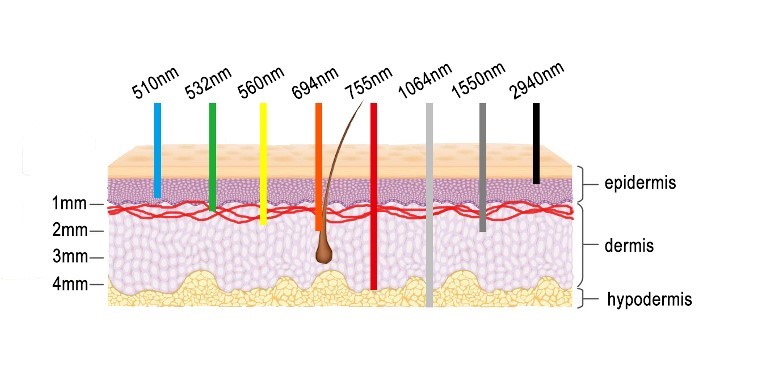
6. Answers to common questions about cafe au lait spots.
Q: Why do cafe au lait spots appear?
A: The pathological manifestations of cafe au lait spots are very similar to those of freckles, showing an increase in melanin granules in melanocytes and keratinocytes in the basal layer of the epidermis, but without the proliferation of melanocytes.
The cause of cafe au lait spots is still unclear, and there is no evidence that cafe au lait spots will be inherited by the next generation.
Q: In what cases should we be alert to cafe au lait spots?
A: Multiple cafe au lait spots indicate the possibility of hereditary diseases. For example, if there are more than 6 spots, we should be alert to the possibility of neurofibromatosis type I. Neurofibromatosis is an autosomal dominant genetic disease with an incidence of about 1/3000.
To diagnose neurofibroma, first of all, the number of cafe au lait spots should be relatively large, at least 6 or more. The size of the spots should be greater than 5 mm in diameter before puberty and greater than 15 mm after puberty.
In addition, cafe au lait spots can also be seen in tuberous sclerosis and other neuroectodermal syndromes, such as Albright syndrome, Watson syndrome and Russell-Silver syndrome. If you have a lot of cafe au lait spots on your body, it is recommended to go to the hospital for some necessary systemic examinations.
Q: What should I do if cafe au lait spots are not effective?
A: Cafe au lait spots are difficult to predict due to the active metabolism of local melanocytes. Various laser treatments have different characteristics (parameters, times, intervals, etc.), and treatment plans need to be selected individually.
Therefore, it is recommended to choose a small area of lesions for spot testing during the first treatment to observe whether the laser is effective. For patients with larger lesions, a variety of lasers can be used for comparative treatment in the laser beauty department, and the best laser instrument can be selected for follow-up treatment according to the efficacy. On the one hand, the number of treatments and treatment costs can be reduced, and on the other hand, a lot of clinical empirical prediction results can be obtained, and a higher clearance rate is being obtained than previous treatments.
At present, some cafe au lait spots are still difficult to remove or prone to repeated recurrence. If the laser treatment effect is not good and the plaque area is small, cosmetic surgery can be finally selected for removal. For those with larger areas, low-energy and high-frequency non-invasive laser treatment methods can also be selected. This method can more effectively inhibit melanin synthesis, thereby achieving a further clinical clearance rate.
Q: What is the best laser treatment for cafe au lait spots?
A: Using a 1064 nm wavelength Q-switched YAG laser can effectively and safely improve and reduce cafe au lait spots. However, the specific treatment needs to be considered based on the skin’s tolerance. A large spot with low energy density is a robust treatment for removing pigment spots.
7. Summary of laser treatment of café au lait spots.
Café au lait spots are a type of pigmented hyperplastic disease caused by abnormal signal transduction pathways, which are often complicated by hereditary multisystem diseases. Their molecular genetic mechanisms are of great significance for genetic counseling, early diagnosis and treatment of many systemic diseases.
Q-switched 1064nm laser treatment of café au lait spots is more effective and has fewer side effects. The shape of the café au lait spots will affect the treatment effect. If the borders are irregular and the color is darker, the effect is better. If the color is light and the edges are regular, the effect is poor.
In order to reduce the probability of postoperative pigmentation, multiple treatments are generally recommended to simultaneously improve the corresponding cure rate. At the same time, before laser treatment of café au lait spots, the characteristics of the patient’s skin lesions should be comprehensively considered, and the energy, energy density, frequency and light spot should be adjusted to effectively control the endpoint reaction to achieve the best effect.
If you want to know more about the treatment options for café au lait spots and their efficacy and safety, you can join Litonlaser’s photoelectric beauty core technology training course. The clinical instructor will share the treatment plan based on typical cases of various spots (freckles, coffee spots, chloasma, age spots, etc.), and explain the underlying logic of photoelectric treatment.
If you need to purchase Q-switched ND YAG lasers or other medical aesthetic equipment for the treatment of various pigment spots, please feel free to contact us: 20-year history of beauty equipment manufacturer.


